How Music Works
by David Byrne
[Book]
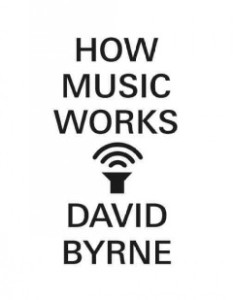
view/request
“I think I managed to give a sense that the world of music is wider than my personal experience, but my experience figures in here too”, David Byrne writes about his recent book How Music Works, and this statement gives you a very good idea of what you will find in this very enjoyable book. How Music Works explores the world of music through the experience of one musician’s experiences and wide ranging thoughts. As a result, it is neither a comprehensive book on the nature of music nor a complete biography of its author, though it combines elements of both. Byrne explores the history of music and musical thought, the influence of technology and economics on music, the role of music in society, and the future of the music industry. Along the way we learn much of Byrne’s career, his own approach to music, art, and performance in general.
Byrne is an excellent writer, and a man with wide ranging and interesting ideas. Reading How Music Works is a pleasure, and left me with an increased urge not only to explore more of his music and to read more of his writing (Forbes Library also owns his Bicylce Diaries), but most of all, to make more music of my own. It is, above all, David Byrne’s unending enthusiasm for everyday creativity and for the participation of everyday people in the world of music that will make the greatest impression on you. A great book which will be enjoyed by music lovers of all types.
Reviewed by Ben
Tagged: Music, Non-fiction, Pop music
George Harrison: Living In The Material World
by Olivia Harrison
[Book]
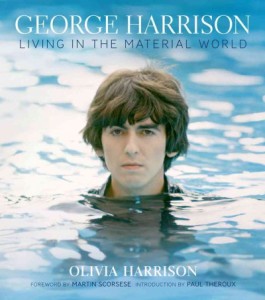
view/request
The gorgeous and painstakingly assembled Living in the Material World book is a companion to the Martin Scorsese documentary of the same name. It’s a thoughtful collection photographs and essays with the subject being the late George Harrison.
Not only do we have large color and black and white photographs of George from childhood up until his last years, the book features the musician’s handwritten letters and lyrics, personal photographs and collected ephemera. His career as a musician, childhood, family life, friendships and spiritual life are recollected. Scorsese, Paul Theroux, Eric Clapton and Dhani Harrison are among the many contributors. Living in the Material World works both as a engrossing read and/or a picture flipper.
Reviewed by Jason
Tagged: Beatles, Biography, Music, Non-fiction
Trippin’ with Terry Southern
by Gail Gerber with Tom Lisanti
[Book]
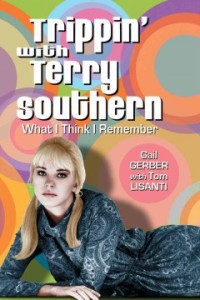
view/request
Gail Gerber’s memoir recalls her time spent with the famous novelist and screenwriter Terry Southern (Dr. Strangelove, the Magic Christian, Blue Movie, Candy, etc.). Despite the title, the book is not filled with madcap, drug taking adventures. Rather, we see an intimate portrait of a couple’s life together through a thirty year period. It also focuses on Southern’s idiosyncrasies, humor and career highs and lows.
Gerber, a stage actress and ballet dancer, also shares several of her professional and personal experiences ranging from early 60’s appearances in Beach Ball, The Loved One and a couple of Elvis Presley films to life as a casual farmer.
Trippin’ with Terry Southern is an interesting memoir and is certainly essential read for Southern fans. In addition, those who enjoy reading about 1960’s and 70’s escapades will be really enjoy the memoir… just peak at the back index to see a list of all of the exciting characters who will pop up (there’s Dennis Hopper, Rip Torn and Stanley Kubrick just to name a few)!
Reviewed by Jason
Tagged: Biography, Film, Memoir, Non-fiction
The Table Comes First
by Adam Gopnik
[Book]
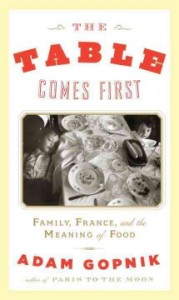
view/request
Here comes a mini review or what we’ll call an appetizer: New Yorker mainstay Adam Gopnik meditates on all things food and dining in the delightful, The Table Comes First. Gopnik, writing in a conversational style, interlaces history into personal anecdotes while sharing recipe favorites. The origins of the restaurant, the evolution of cooking methods and the role food plays with family, are expounded upon here with great skill and humor.
Reviewed by Jason
Tagged: Essays, Food, Non-fiction
The Story of English in 100 Words
by David Crystal
[Book]

view/request
The Story of English in 100 Words, by Welsh linguistics professor David Crystal, is a refreshing word book. With short easy to read chapters, it is a quick read, especially once you have caught Professor Crystal’s contagious enthusiasm.
I say The Story of English in 100 Words is refreshing in part because it is an easy enjoyable read, but also because it is different from other word books. Too many word books are based on anecdote and folk etymologies. You won’t many of those in The Story of English. Instead, you will find the stories of words and revealed by known facts. When did a word first appear? How was it spelled? How was it used at the time? How did its meaning change? What words were used similarly? There may be some guessing involved, but the answers to these questions are based on research, and we learn much about the English language in answering them.
Does this approach sound overly academic? Don’t worry. The examples are surprising and amusing, and the text is never bogged down in details. Most of the chapters are just a couple of pages, and include many illustrative examples. The examples are drawn from throughout the history of the language, from Old English, to new Internet coinages. This is a book about the history of English, and therefore a book about how English grows and changes. A very fun read!
Reviewed by Ben
Tagged: Language, Non-fiction
Blood, Bones, & Butter: The Inadvertent Education of a Reluctant Chef
by Gabrielle Hamilton
[Book]
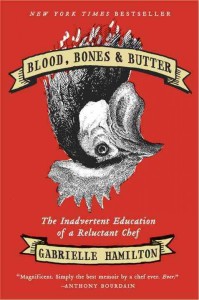
view/request
Hailed as “the best memoir by a chef ever” by Anthony Bourdain, and a NY Times Notable Book in 2010, this unusual memoir follows the life of Gabrielle Hamilton, now chef/owner of Prune in NYC. It is unusual in that Hamilton is such a good writer, and seemingly holds nothing back, allowing us to see the bad and ugly along with the good.
The quality of her writing is partially explained with her MFA from the University of Michigan, an experience she relates in ambivalent terms, “It’s a tired reading style…it attaches more importance to the words than the words themselves — as they’ve been arranged, could possibly sustain, and it gives poets and poetry a bad name. Which is not what I came to graduate school for; I want to forever admire poets.”
The bad and the ugly includes her wayward youth and relationship with her family after her parent’s divorce. How she develops from a lost girl to opening an award-winning restaurant in New York and a marriage with an Italian doctor (and his family), is a compelling story, with lots of detail of the food along the way, that never feels like it bogs down the story.
And here, as a treat to celebrate my last day before continuing on my journey, when we drove to the coast, past fields of shooting asparagus and trees about to burst forth, and we stopped finally at the water’s edge in St. Malo- here are platters of shellfish pulled that very morning from the sea-langouste, langoustines, moules, crevetted, huitres, bigorneaux, coques. These are the pearl-tipped hat pins stuck into a wine bottle cork for pulling to the meats of the sea snails. The tide ran out, and the fishing boats slumped in the mud attached to their slack anchors like leashed dogs sleeping in the yard. The particular smell of sea mud went up our nostrils as we slurped the brine from the shells in front of us, so expertly and neatly arranged on the tiers.
Reviewed by Molly
Tagged: Food, Memoir, Non-fiction
I’m a Stranger Here Myself: Notes on Returning to America After Twenty Years Away
by Bill Bryson
[Book]
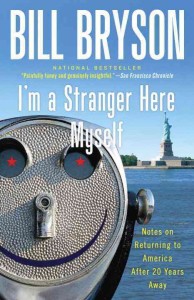
view/request
A collection of articles originally written for a weekly British magazine chronicles Bryson’s humorous reintroduction to life in America: “The intricacies of modern American life still often leave me muddled.” From dental floss hotlines, to cupholders, to the abundance of trees in New Hampshire, Bryson entertains us with his laugh-out-loud writing.
Reviewed by Molly
Tagged: Humor, Non-fiction, Travel
Krazy Kat: the Comic Art of George Herriman
[Book, Graphic Novel]
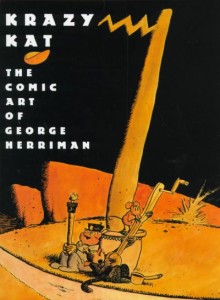
view/request
Krazy Kat was a remarkable and hugely influential daily comic. Found in newspapers around the country for over 30 years, from 1913 and 1944, it would influence comics greats such as Charles M. Schulz, Will Eisner, and Bill Watterson. Krazy Kat: The Comic Art of George Herriman provides an overview of the life and works of Krazy Kat creator George Herriman, and includes a large collection of beautifully reproduced daily and Sunday Krazy Kat strips.
Herriman’s astonishing Sunday Krazy Kats are reason to pick up this book alone. Giant, free form, brightly colored affairs, unconstrained by the rigid panels of today’s strips, it is the surreal landscapes and innovative design of the Sunday strips for which Herriman is best know, and with good reason. (Fans of Calvin and Hobbes will immediately recognize the influence of these strips on Bill Waterson’s Spaceman Spiff strips.)
Krazy Kat is not particularly funny, but I love reading it. Krazy Kat is dreamlike and poetic, a little bit difficult, and very much worth your while. Full of characters and images you will not forget, this is a bit of comics history you should definitely check out.
Reviewed by Ben
Tagged: Comics, Non-fiction
A Bigger Message: Conversations with David Hockney
by Martin Gayford
[Book]
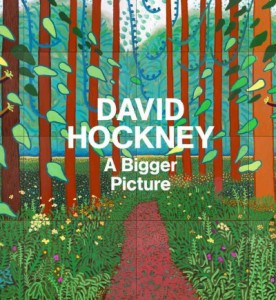
view/request
Critic Martin Gayford has been interviewing David Hockney for many years and the two have developed a warm friendship that extends past their professional relationship. In A Bigger Message, Gayford collects several conversations with the famed British artist. Discussions range from new technology, photography, stage design, living in different parts of the world, various histories of classical art and Hockney’s own process.
Gayford frames each chapter with a theme that corresponds to the many phases of Hockney’s career. One very interesting segment discusses his attraction to creating work on an iPhone or iPad. The book exhibits several of these small scale works that look very much like detailed watercolors.
These pieces along with massive painted landscapes, stills of video installations and photographs of Hockney at work are weaved in and out of Gayford’s brief biographical information and extensive dialog with the tireless artist. Like many innovative, creative people, he is also very much a student of art. Hockney, and here I’ll sound redundant, is a thoughtful thinker and his meditations on artistic movements, motivation and life are extremely fascinating and inspiring.
Reviewed by Jason
Tagged: Art, Biography, Interviews, Non-fiction
Maphead : charting the wide, weird world of geography wonks
by Ken Jennings
[Book]
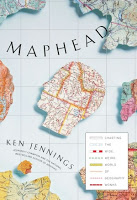
view/request
I like maps, I like geography and I mostly liked this book. Ken Jennings’ book had many interesting stories to tell; my favorites being the sections on early cartography, the London Map Fair and the National Geographic Bee. He lost me however with the couple of chapters devoted to GPS (games and navigation) and geocaching. I was disappointed that I did not love this book in its entirety but would recommend it nevertheless because of the author’s informative and witty writing.
Reviewed by Susana
Tagged: Geography, History, Maps, Non-fiction
Sempre Susan: A Memoir of Susan Sontag
by Sigrid Nunez
[Book]

view/request
This very short memoir of the association between Ingrid Nunez and Susan Sontag recounts their friendship/mentorship during the time that Sontag was writing “On Photography” and New York literary life in the 1970’s. Nunez was hired by Sontag to help sort out her correspondence. She then became involved with Sontag’s son, David Rieff, and for a period of time the three of them lived in the same apartment. There are many glimpses into Sontag’s writing life and habits which I found very interesting. Susan Sontag is often portrayed as a very difficult person and Nunez does show some instances of how that was true but she also rounds out the portrait with other details that showed Sontag as a complicated person with many aspects including vulnerability, conflicted and humorous and loving.
Reviewed by Susana
Tagged: Biography, Manhattan, Non-fiction, Women
Incognito : the secret lives of the brain
by David M. Eagleman
[Book]
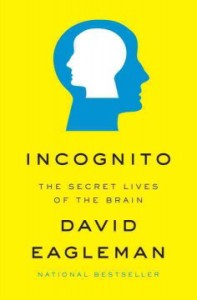
view/request
Incognito: The Secret Lives of the Brain is a fun and informal look at the subconscious, and often surprising, workings of the human brain. Consciousness, Eagleman says, only sheds light on a tiny portion of the way our minds work. Most of what goes into our decisions, our preferences, our very thoughts, is invisible to us. The inner workings of the brain are revealed not by introspection; instead, we learn the most about our own thoughts by considering behavioral studies, the perceptions of illusions, and the revealing actions of those suffering from brain damage or cognitive disorders. From such observations we learn that the perception of motion does not require movement, that the acquisition of skills does not require conscious memory, and that certain types of logical problems are easy for us only when they are given meaning in a social context.
This book is meant to entertain. It is not the place to go if you are looking for a good understanding of the science of the human mind. But if you want an enjoyable read which provides some surprising insights into human behavior, you may enjoy Ingcognito.
Reviewed by Ben
Tagged: Non-fiction, Psychology, Science












